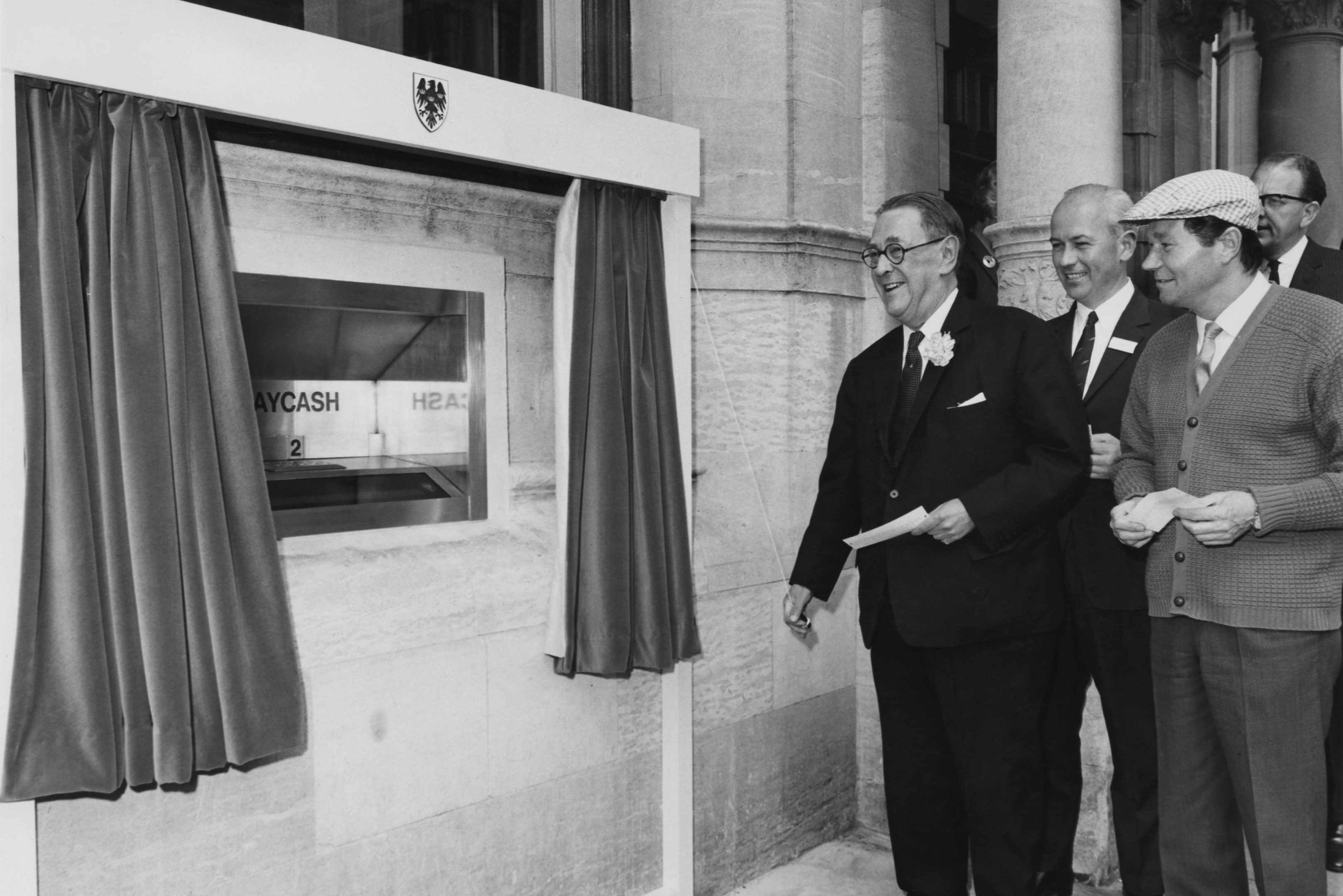
THEY are such an essential part of modern life that millions rely on them to get through the day.
It’s 50 years today since the first ever withdrawal was made from a cash machine.
Now as the anniversary approaches, a new generation of ATMs, developed in Scotland, will revolutionise the humble hole-in-the-wall machine.
John Shepherd-Barron, whose dad was Scottish and who went to university in Edinburgh, was the inventor who changed personal finance forever.
His initial idea was based on automatic chocolate vending machines and won over the boss of Barclays so quickly that a deal was signed over a swift pink gin.
The first ATM – automated teller machine – was installed at one of the bank’s branches in Enfield in London in 1967 and Reg Varney, star of popular sitcom On The Buses, made the inaugural withdrawal.
As plastic bank cards hadn’t yet been invented, the early machines used cheques matched up against PIN numbers, with £10 being the maximum amount withdrawn. The four-digit PIN we’ve all used for the past half century came into being because Shepherd-Barron’s wife could only recall that many numbers rather than the six he had originally intended.
The new “bank in a box” machines designed by NCR are intended to appeal to the millions who now do their banking on their smartphone or tablet.
They allow users to swipe, pinch and zoom on the screen just as they would do on their own device. Transactions started on a mobile or tablet can be completed on the high-tech machines.
Customers can also speak to bank staff directly via a video link and the machines should appeal to older customers who can make the text easier to read. They are set to be rolled out here shortly.
“We had 100 staff here leading the development of these new machines,” said NCR’s boss in Dundee, Adam Crighton.
“It took two-and-a-half years, with other staff throughout the world involved.
“They were tested in 1000 American bank branches before being launched on Valentine’s Day.
“They take ATMs to the next level, but we are already working on new developments.
“Scotland has always been a world leader when it comes to ATMs and we’re really proud to be continuing that tradition.”
The new machines also include drive-thru versions now in use in the US and UK banks are talking about launching these next year.

Enjoy the convenience of having The Sunday Post delivered as a digital ePaper straight to your smartphone, tablet or computer.
Subscribe for only £5.49 a month and enjoy all the benefits of the printed paper as a digital replica.
Subscribe